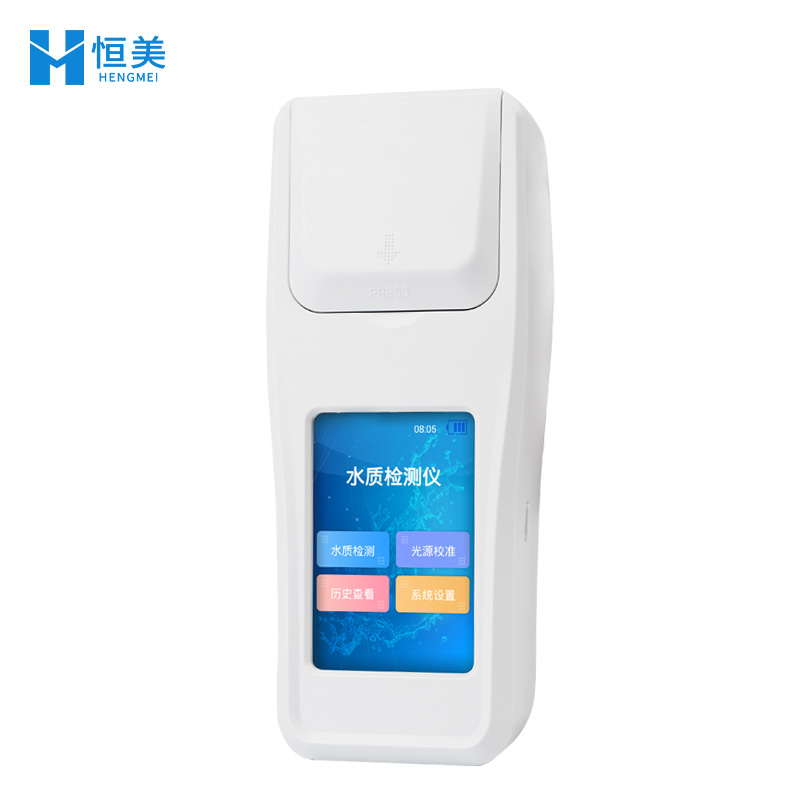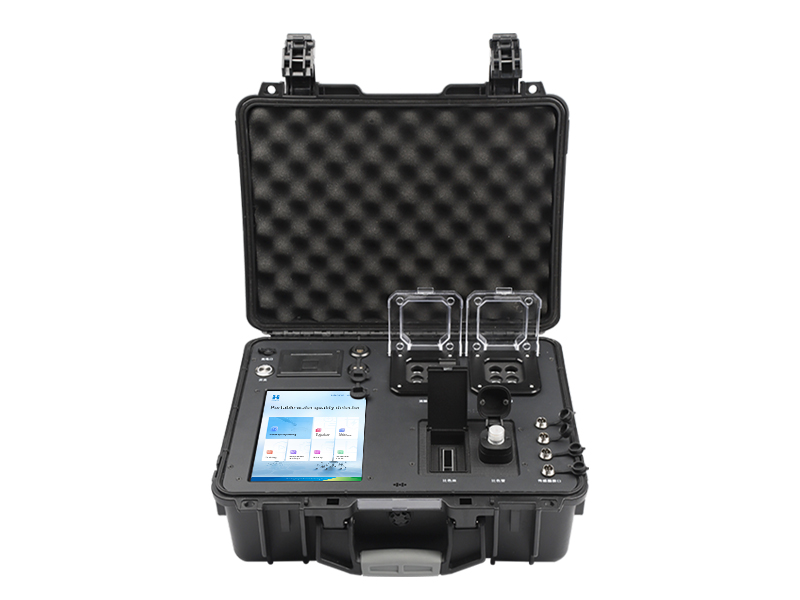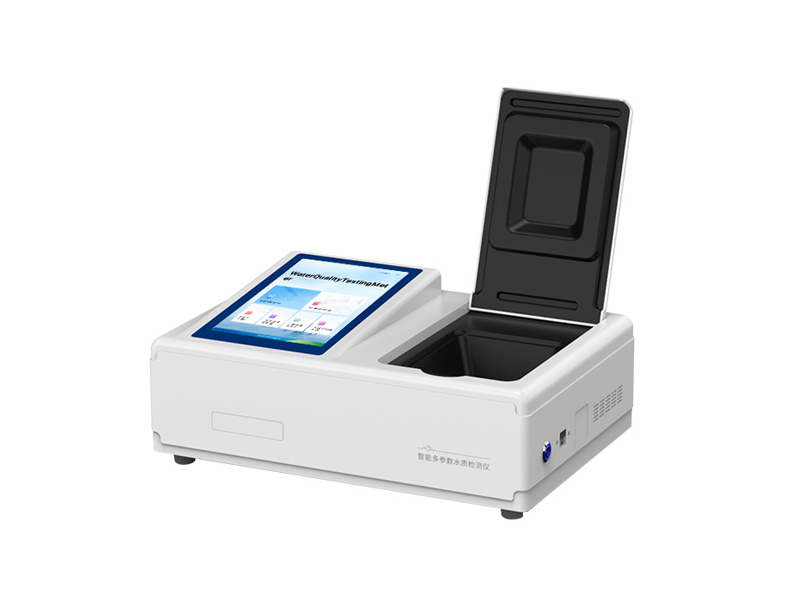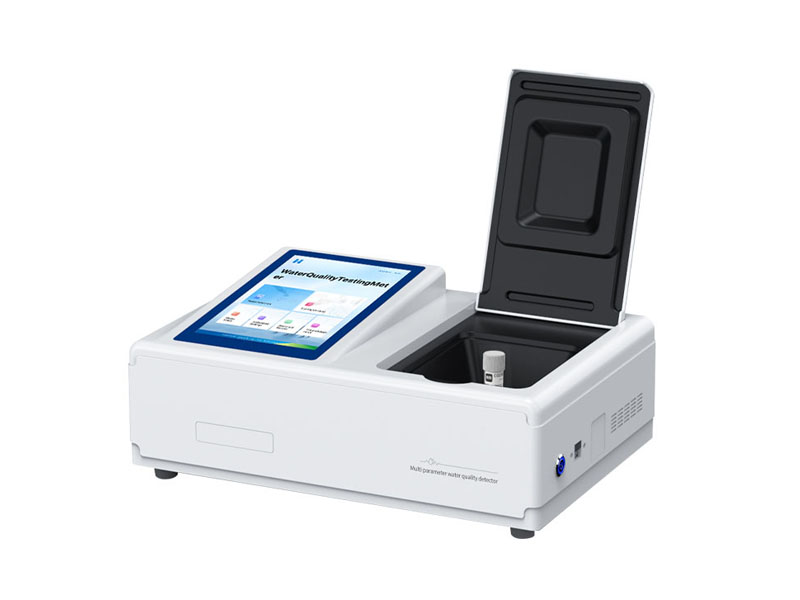Product Center
-
Multi Parameter Water Quality Analyzer
-
COD/BOD Analyzer
-
Determination of Ammonia Nitrogen
-
Determination of Total Phosphorus and Total Nitrogen
-
Biological Toxicity Testing
-
Disinfection Residue Determination
-
Online water quality monitoring instrument
Dissolved oxygen online analyzer PH online monitoring device Chloride ion online monitoring instrument Conductivity online monitoring device Turbidity online monitoring instrument Online water hardness monitoring instrument ORP online monitoring device Residual chlorine online monitoring device Total organic carbon monitoring equipment -
Other related tests
Water quality heavy metal detector Infrared oil analyzer Water quality nitrite analyzer Colorimeter Dissolved oxygen analyzer Turbidity detector Total OrganicCarbon Analyzer Chlorophyll detector in water Suspended solids analyzer Water quality total hardness/total alkalinity detector Surfactant detector Proportional water quality sampler Microbial detector in water Sulfide acidification blowing instrument Carbon dioxide detector in water Online water quality sensor
Recommended articles
- Principle and application analysis of COD tester
- How to Test Residual Chlorine in Water? Portable Chlorine Dioxide Detector Solution
- What instrument is used to measure TOC?
- Multi parameter water quality analyzer: technological innovation for water safety guardians
- Water Quality Detector | Portable Multi-Parameter Analyzer
- How accurate is a TOC analyzer?
 Current
location:HOME>NEWS>Company News>How to Test Residual Chlorine in Water? Portable Chlorine Dioxide Detector Solution
Current
location:HOME>NEWS>Company News>How to Test Residual Chlorine in Water? Portable Chlorine Dioxide Detector Solution
How to Test Residual Chlorine in Water? Portable Chlorine Dioxide Detector Solution
Article Source:Hengmei Water Quality Analysis Instrument Network Release time:2025-10-15 17:36:05
Accurate detection of residual chlorine, total chlorine, and chlorine dioxide in water is crucial in the water quality monitoring and safety assurance system. The excessive or insufficient content of these substances can have a direct impact on water quality, ecological environment, and human health. The residual chlorine and total chlorine dioxide detector, as a specialized instrument for detecting these indicators, plays an important role in multiple fields due to its unique performance.

The importance of residual chlorine, total chlorine and chlorine dioxide detector
Residual chlorine, total chlorine, and chlorine dioxide play important roles in water disinfection. Residual chlorine can continuously kill bacteria and viruses in water, ensuring the hygiene and safety of drinking water during transportation; Total chlorine reflects the total amount of chlorine in water and is an important indicator for evaluating disinfection effectiveness and potential risks; Chlorine dioxide, as an efficient disinfectant, is widely used in water treatment, and its content needs to be strictly controlled to avoid harm to human health and the environment.
The residual chlorine and total chlorine dioxide detector provides direct data support for water quality safety by accurately measuring the content of these substances. In the supply of drinking water, it can be ensured that the disinfectant content in the water is within a reasonable range, which not only ensures the disinfection effect, but also prevents excessive adverse effects on the human body; In sewage treatment, it is possible to monitor the residual disinfectant in the treated water to avoid environmental pollution; In the daily management of various water related environments, it provides a key basis for timely detection of water quality problems and taking corresponding measures. It can be said that this detector is the "eye" for safeguarding water quality safety and an important tool for ensuring public health and ecological balance.
Technical advantage
The residual chlorine and total chlorine dioxide detector is manufactured in accordance with HJ 586-2010 and GB/T 5750.11-2023 standards, and is equipped with rapid colorimetric detection reagents to achieve "fast, simple, accurate, and stable" measurements. It also has many significant technical advantages:
Intelligent and convenient operating system
Adopting the Android intelligent system, the operation is simpler and faster, and users can easily complete various detection operations. Built in operation process, no professional training required, staff can directly get started, greatly reducing the operating threshold and training costs, and improving work efficiency.
Powerful data analysis and management capabilities
Configure a cloud monitoring platform, and the detection results can be directly wirelessly transmitted to the platform, facilitating short - and long-term analysis of water quality and providing data support for management decisions. Through the platform, one can clearly grasp the trend of water quality changes, timely identify potential problems, and assist in achieving scientific management.
Efficient detection capability
Faster detection speed, on-site data reading, no need to bring samples back to the laboratory and wait for long results, can quickly respond to water quality testing needs, especially suitable for on-site emergency testing and real-time monitoring scenarios.
Portable performance
Portable design, small size, light weight, convenient for outdoor testing. Whether by the riverbank, swimming pool, or outdoor water source, staff can easily carry and carry out testing work anytime, anywhere.
Stable and durable performance
Compact and beautiful in appearance, stable and maintenance free in operation, with good cost-effectiveness. Using imported cold light sources, the optical performance is stable, with a lifespan of up to 100000 hours, reducing the frequency and cost of equipment maintenance and replacement.
Flexible power supply method
AC/DC dual-use, built-in rechargeable lithium battery, environmentally friendly and durable, can support continuous indoor and outdoor work. In outdoor environments without external power sources, the continuous testing work can be ensured, improving the applicability of the equipment.
Application field
In the field of drinking water and tap water: In drinking water treatment plants and tap water supply systems, this detector can monitor the residual chlorine and total chlorine content in water in real time, ensuring that the disinfection effect of factory water and pipeline water meets hygiene standards and ensuring the safety of residents' drinking water.
Medical wastewater field: Medical wastewater contains a large amount of bacteria and harmful substances, and disinfectants need to be used for disinfection during the treatment process. The detector can monitor the residual chlorine and other indicators in the treated wastewater to ensure that the discharged wastewater meets environmental standards and avoid environmental pollution and disease transmission.
In the field of industrial wastewater, the composition of wastewater generated during industrial production is complex, and some industrial wastewater needs to be disinfected. This detector can detect the residual chlorine, total chlorine, and chlorine dioxide content in the treated industrial wastewater to ensure that the wastewater meets the discharge standards.
In the field of river monitoring, the detection of residual chlorine, total chlorine, and chlorine dioxide in natural water bodies such as rivers can understand the degree to which water bodies are affected by human activities, assess the impact of surrounding pollution sources on water bodies, and provide data support for river ecological protection and governance.
Swimming venue field: The water quality of swimming venues is directly related to the health of swimmers. The detector can quickly detect residual chlorine and other indicators in the pool water, ensuring that the water quality meets hygiene requirements and providing a safe swimming environment for swimmers.
Solution
Solution for Monitoring Drinking Water Safety
Relying on standardized detection performance and convenient operation, this detector can be integrated into the drinking water monitoring system to achieve full process residual chlorine and total chlorine monitoring from source water to terminal drinking water, timely detect problems in the disinfection process, and ensure the safety and compliance of drinking water. Combined with the cloud monitoring platform, water quality data from different regions and time periods can be summarized and analyzed, providing comprehensive support for drinking water safety management.
Solution for standard discharge of sewage treatment
For the treatment of medical wastewater, industrial wastewater, etc., the detector can quickly detect relevant indicators in the treated water and determine whether the treatment effect meets the discharge standards. Its portability allows staff to conduct inspections at the sewage treatment site at any time, adjust the treatment process in a timely manner, ensure that sewage is discharged in compliance with standards, and reduce environmental risks.
Outdoor emergency monitoring solution
With its portable design, dual-purpose AC/DC power supply, and fast detection capability, this detector has become an ideal tool for outdoor emergency water quality monitoring. In the event of a sudden water pollution incident, it is possible to quickly rush to the scene to detect the residual chlorine, total chlorine, and chlorine dioxide content in the polluted water body, providing timely data support for emergency response.
The residual chlorine and total chlorine dioxide detector plays an irreplaceable role in water quality safety monitoring. The detector introduced in this article is manufactured according to relevant standards and has many technical advantages such as intelligence, convenience, efficient detection, portability, and durability. It can effectively address many pain points in the industry.
In the fields of drinking water safety, sewage treatment, environmental monitoring, etc., this detector provides accurate and rapid detection support for water quality management. With the continuous improvement of water quality safety awareness, the requirements for detection equipment will also become increasingly strict. This residual chlorine total chlorine dioxide detector will play an important role in more scenarios and contribute to safeguarding water quality safety. I hope that through the introduction in this article, users can have a more comprehensive understanding of the detector and fully realize its value in practical applications.
Article address:http://www.hmwatertesting.cn/article1/138.html
- Previous: Bromate Rapid Detector: Essential for Ensuring Packaged Drinking Water Safety
- Next: no more
Related products
Related articles
-
How accurate is a TOC analyzer?
2025-07-23 -
What is a handheld water quality tester for for water quality measurement?
2025-07-23 -
How to Test Residual Chlorine in Water? Portable Chlorine Dioxide Detector Solution
2025-10-15 -
What are the advantages of water toxicity analyzer?
2025-07-23 -
Portable Infrared Spectrophotometer for Oil Analysis: Rapid On-Site Detection of Water and Soil Oil Pollution
2025-09-19 -
Multi parameter water quality analyzer: technological innovation for water safety guardians
2025-07-15 -
COD Tester: Accurate and Efficient, Mastering the Pulse of Water Quality
2025-07-15 -
What is the best water tester for drinking water?
2025-07-23









